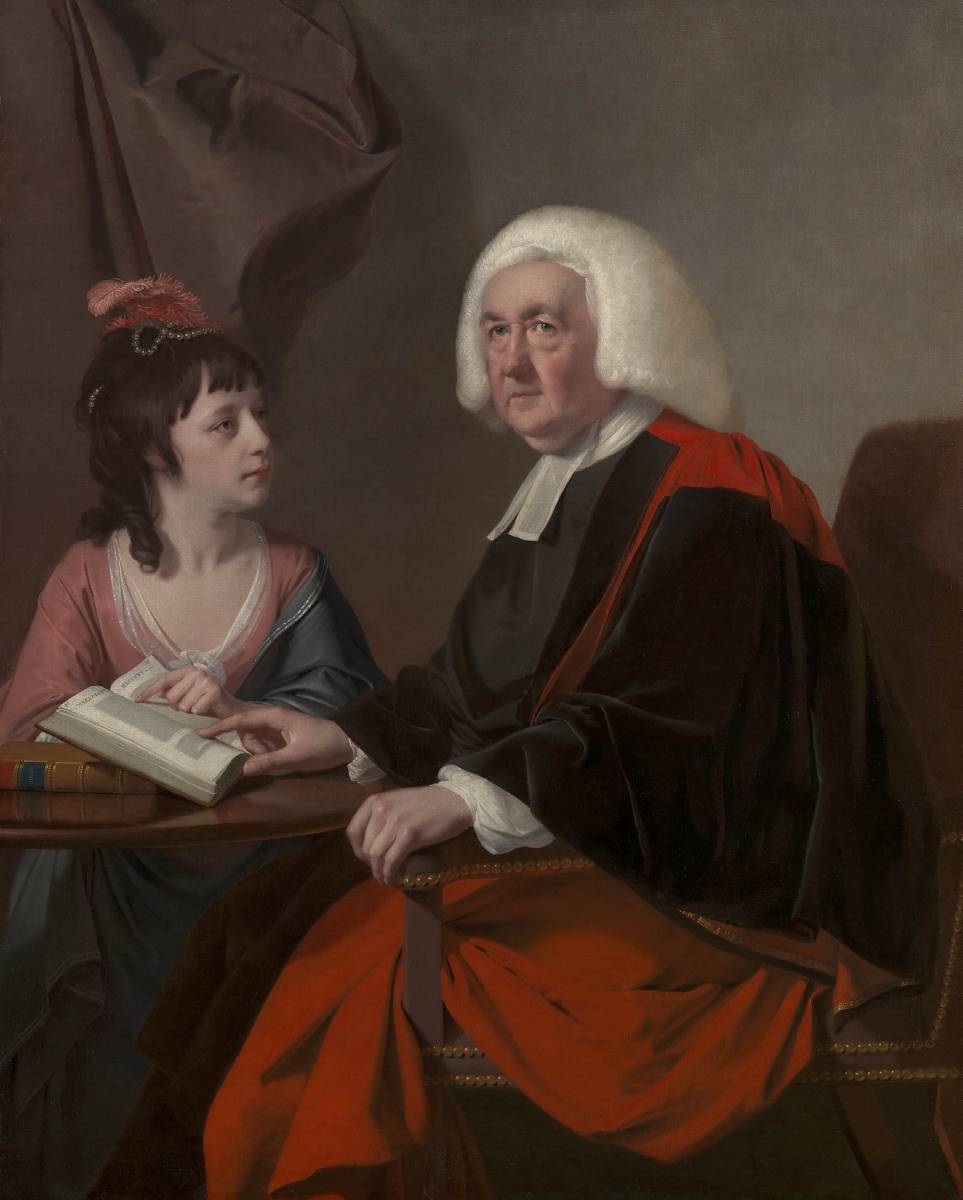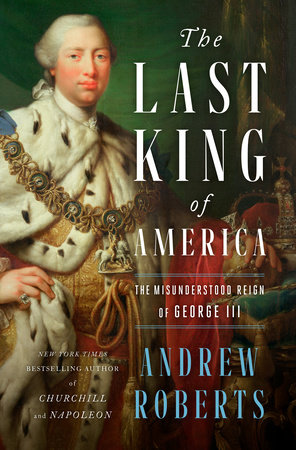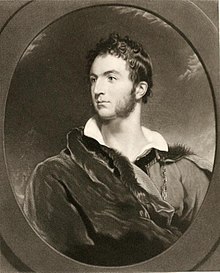“I would have her taste the exalted pleasure of the universal applause”
Some of Macaulay’s admirers looked askance at that arrangement. Not because Wilson was neglecting his parish of Walbrook in London by staying at Bath. It was rather common for older rich Anglican clerics to be absentees, so no one really complained.
Rather, on 18 Feb 1774 the Rev. Augustus Toplady, author of the “Rock of Ages” hymn, warned Macaulay about the “dapper doctor” in a letter; “beware of being seen with him in public,” Toplady wrote. “He would derive lustre from you, but, like a piece of black cloth, he would absorb the rays, without reflecting any of them back.”
Toplady’s metaphor makes an interesting note on the Joseph Wright of Derby painting shown yesterday, which plays Wilson’s black clothing off his adopted daughter’s shiny pink and blue garments.
In fact, Wilson was more than happy to publicize Macaulay’s genius. Soon the British press caught wind of the relationship between the septuagenarian minister and the fortysomething historian, both widowed. Writers began to hint that Wilson’s admiration for Macaulay was creepy. He didn’t help by organizing a public birthday celebration for her in 1777, presenting her with a gold medal, and then publishing the six odes read to her that day.
Already a patron of artists, Wilson commissioned Robert Edge Pine to paint a portrait of Macaulay holding a letter to him. Then he commissioned John Francis Moore to carve a sculpture of Clio, muse of history, based on that portrait.
To make sure no one missed the reference, Wilson had the statue (shown above) mounted on a plinth spelling out that it was “a Testimony of the high Esteem he bears to the distinguished Merit of his Friend CATHERINE MACAULAY.” The plinth also displayed quotations from her work. And it quoted from a 1775 novel titled The Correspondents, falsely rumored to be the letters of Baron Lyttleton (1744–1779) and his future bride:
You speak of Mrs. Macaulay. She is a kind of prodigy. I revere her abilities. I cannot bear to hear her name sarcastically mentioned. I would have her taste the exalted pleasure of the universal applause. I would have statues erected to her memory; and once in every age I would wish such a woman to appear, as proof that genius is not confined to sex…but…at the same time…you’ll pardon me, we want no more than one Mrs. Macaulay.Abigail Adams had written a fan letter to Macaulay in 1774. When she heard about that statue and inscription, she told her sons’ tutor, John Thaxter:
It gives me pleasure to see so distinguished a Genious as Mrs. Macauly Honourd with a Statue, yet she wanted it not to render her Name immortal. The Gentleman who erected it has sullied the glory of his deed by the narrow contracted Spirit which he discovers in the inscription, and if a Quotation from Lord Lyttleton (as I understand it) it is a pitty that what was meant to perpetuate the memory of that Lady should cast a shade upon the character of that Nobleman for whom heretofore I have had a great veneration. Even the most Excellent monody which he wrote upon the Death of his Lady will not atone for a mind contracted enough to wish that but one woman in an age might excell, and she only for the sake of a prodigy. What must be that Genious which cannot do justice to one Lady, but at the expence of the whole Sex?Dr. Wilson even had the statue of Macaulay/Clio and plinth installed inside his London church in September 1778—the church he hadn’t otherwise served for years.
But within a couple of months, the relationship between Macaulay and Wilson was in tatters.
TOMORROW: A transatlantic medical career.








%2C_by_John_Singleton_Copley.jpg/220px-Mrs_James_Warren_(Mercy_Otis)%2C_by_John_Singleton_Copley.jpg)




.jpg/220px-John_Montagu_(1719-1795).jpg)








